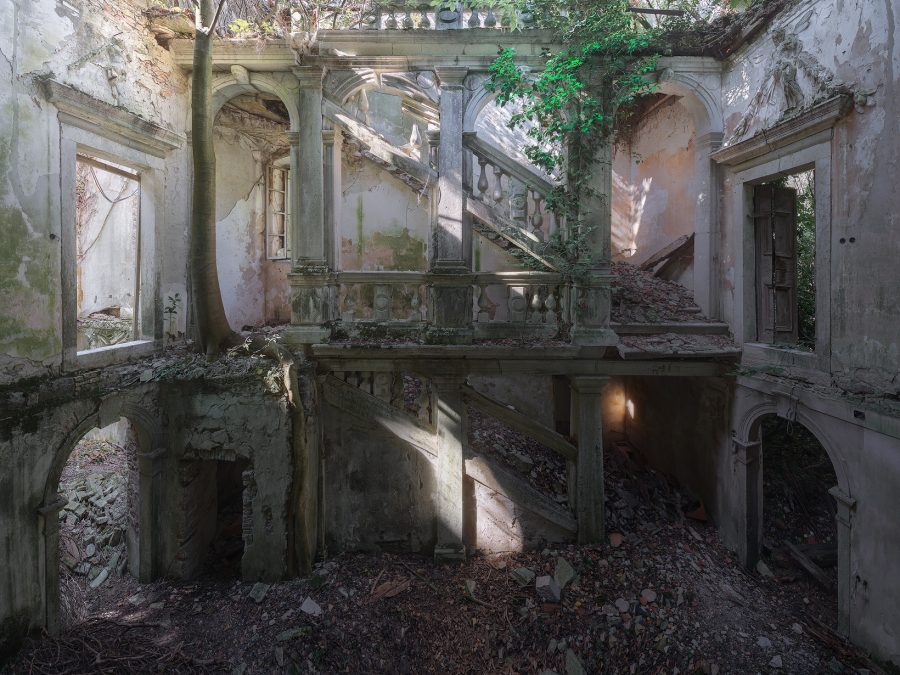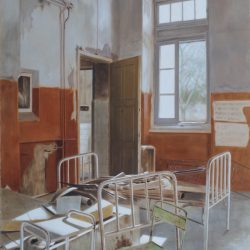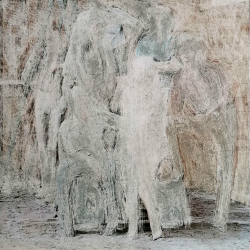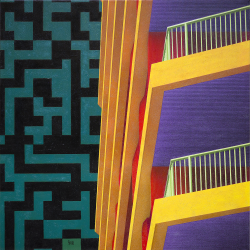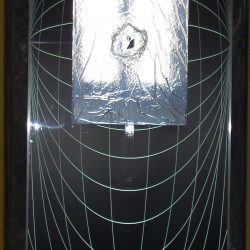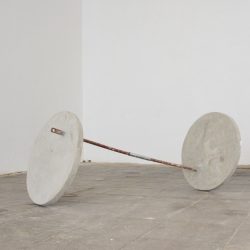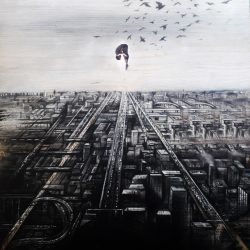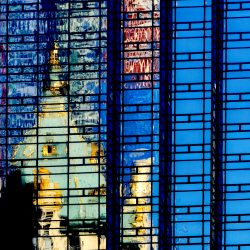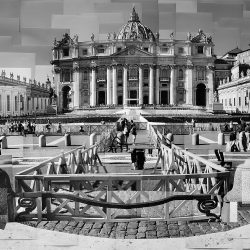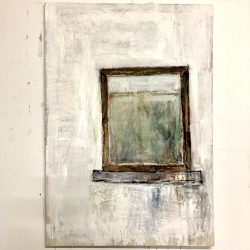work
The hanging gardens of Babylon
| category | Photography |
| subject | Architecture |
| tags | fotografia, architettura, architettura italiana, scale, palazzi abbandonati, malinconia, abbandono, Caravaggio, fine art, luce |
| base | 120 cm |
| height | 90 cm |
| depth | 0 cm |
| year | 2020 |
Photographic print on fine art baritate paper mounted on aluminum dibond panel and framed with black aluminum frame (1 cm)
9 editions 120x90 cm and 5 editions 185x138 cm
In the north east of Italy, on the edge of a small town, there is a palace that has largely exceeded the normal state of decay that I normally see in my explorations. Much of its structure has yielded and many rooms are just skeletons without more floors and ceilings.
The natural space, robbed of its integrity hundreds of years ago at the time of the construction of the palace, is recovering in the last decades what was taken from it.
The wild climbing vegetation has taken over the walls and covers most of the sides and the tops of the open-air rooms. A jungle that swallows up the ancient remains of a lost civilization. In my imagination I imagined ancient Babylon with its hanging gardens.
When I get to the old staircase, wonder takes hold of me.
Here it is, austere and strenuous in its resistance. A staircase that leads to nothing, remained aesthetically an end in itself.
It easily reaches 8 meters in height but the winning element, the icing on the cake that gives that added value, is a tree that has grown on a ledge at half height. That plant, now a tree, must have been there for at least a decade judging the consistency of the trunk.
From the initial amazement I started to activate the photographer in me. From the ground and at such a close distance it is impossible to make an architectural photo that maintains the lines of the vertical walls, a necessary condition to convey a certain canonicity, order and sense of reality.
To photograph from the front, you had to be on a higher level from the ground. Wings were not an option.
In front of the staircase there was on the first floor an opening of a room that was actually a thin space that gave on the void, just as you can see in the other openings on the sides of this photo.
Snooping around I found objects that could serve as an improvised staircase. Once over I had a slim space of half a meter where to stand including the tripod, with the legs so slightly open to make it stable that it seemed almost closed. In fact I was on the side of the tripod, I couldn’t stand behind the tripod, so with various contortions, hovering at 4 meters high, I adjusted the various camera settings.
With the staircase the tree was the protagonist comprimario, the lord of my very personal hanging garden of Babylon. An element grown undisturbed in an unlikely place. The anomaly it attracts.
Place names are omitted to preserve their safety.
9 editions 120x90 cm and 5 editions 185x138 cm
In the north east of Italy, on the edge of a small town, there is a palace that has largely exceeded the normal state of decay that I normally see in my explorations. Much of its structure has yielded and many rooms are just skeletons without more floors and ceilings.
The natural space, robbed of its integrity hundreds of years ago at the time of the construction of the palace, is recovering in the last decades what was taken from it.
The wild climbing vegetation has taken over the walls and covers most of the sides and the tops of the open-air rooms. A jungle that swallows up the ancient remains of a lost civilization. In my imagination I imagined ancient Babylon with its hanging gardens.
When I get to the old staircase, wonder takes hold of me.
Here it is, austere and strenuous in its resistance. A staircase that leads to nothing, remained aesthetically an end in itself.
It easily reaches 8 meters in height but the winning element, the icing on the cake that gives that added value, is a tree that has grown on a ledge at half height. That plant, now a tree, must have been there for at least a decade judging the consistency of the trunk.
From the initial amazement I started to activate the photographer in me. From the ground and at such a close distance it is impossible to make an architectural photo that maintains the lines of the vertical walls, a necessary condition to convey a certain canonicity, order and sense of reality.
To photograph from the front, you had to be on a higher level from the ground. Wings were not an option.
In front of the staircase there was on the first floor an opening of a room that was actually a thin space that gave on the void, just as you can see in the other openings on the sides of this photo.
Snooping around I found objects that could serve as an improvised staircase. Once over I had a slim space of half a meter where to stand including the tripod, with the legs so slightly open to make it stable that it seemed almost closed. In fact I was on the side of the tripod, I couldn’t stand behind the tripod, so with various contortions, hovering at 4 meters high, I adjusted the various camera settings.
With the staircase the tree was the protagonist comprimario, the lord of my very personal hanging garden of Babylon. An element grown undisturbed in an unlikely place. The anomaly it attracts.
Place names are omitted to preserve their safety.



